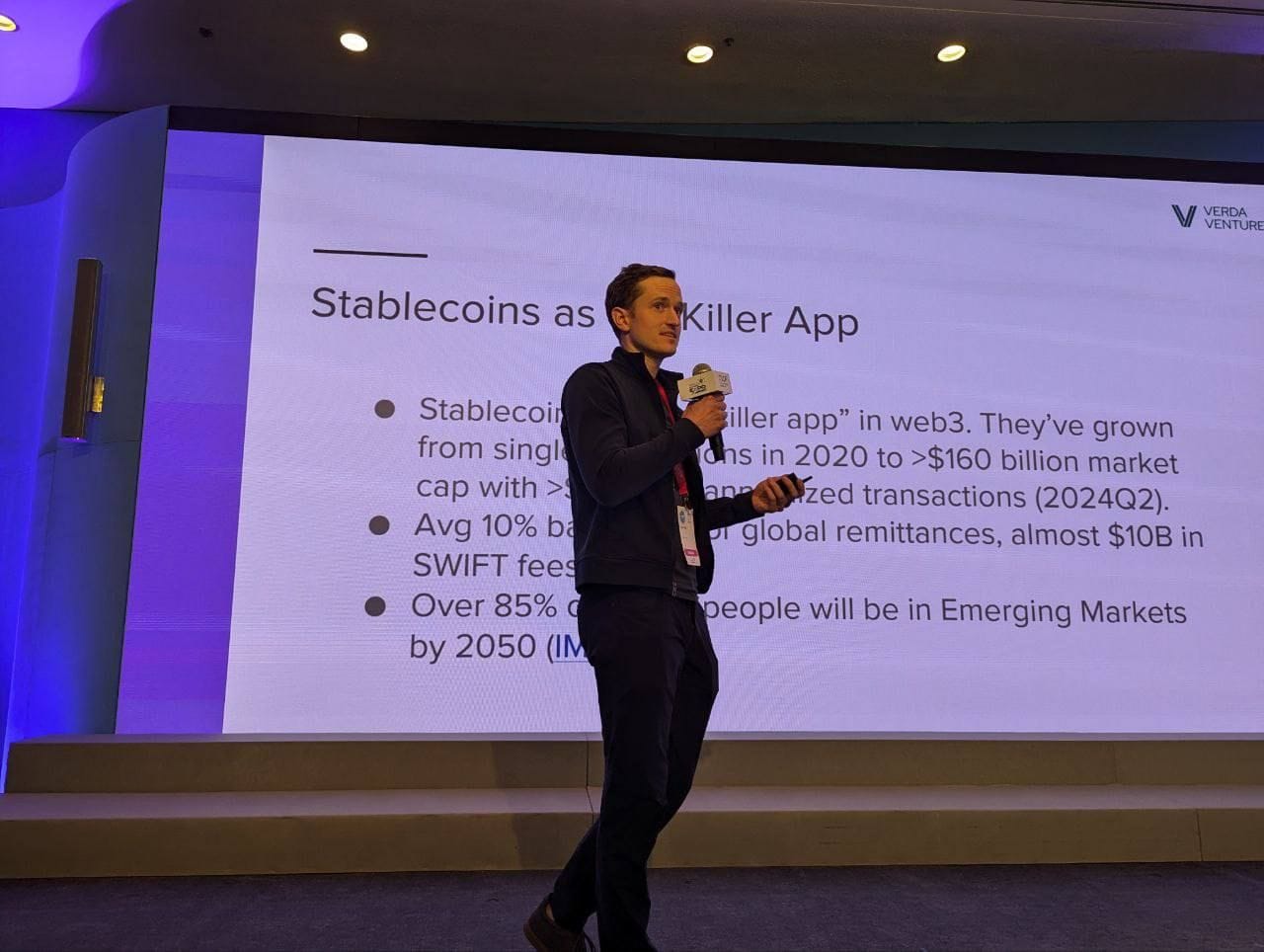Sidebar: Inside Minipay’s $40M stablecoin strategy
For Minipay, stablecoins aren’t just a product but the foundation for cross-border payments, savings, and financial inclusion in a fragmented continent.

Alex Witt is a partner at Verda Ventures, the team behind the $40 million Minipay Fund launched in 2024. The fund backs companies building on or integrating with Minipay — a non-custodial crypto wallet that’s gradually transforming into a super app by adding so-called mini apps.
We spoke with Alex about what the fund is betting on, how stablecoins play into Africa’s financial future, and what building on the Minipay ecosystem means.
This interview has been edited for length and clarity.
Let’s start with the basics. What exactly is the Minipay Fund, and what are you looking to achieve with it?
AW: Minipay Fund is a $40 million fund anchored by Opera, Tether, JUMP and Borderless aimed at supporting companies that build on or integrate with the Minipay wallet. Minipay is currently the fastest-growing non-custodial wallet on the continent, and it recently topped the Google Play Store in Kenya — ahead of apps like Facebook and WhatsApp. We’re leveraging that growth to help startups scale.
Our goal is to provide distribution, not exclusivity. Founders are free to integrate with other chains or wallets. What they get from Minipay is access to one of the fastest-growing distribution channels in Africa.
What kinds of companies have you funded so far?
AW: So far, we’ve backed a mix of infrastructure and user-facing plays:
- Pretium Africa: A last-mile infrastructure provider.
- Partna: An on/off-ramp startup that went through Y Combinator and is already integrated in Nigeria.
- Mento: Offers local stablecoins, including the Kenyan shilling and West African CFA franc.
- Mural: Enables instant payments to African contractors working with global companies.
All of these companies are working within the Minipay ecosystem in some way, and we’re continuing to scout for more founders with local expertise.
What’s Minipay’s value proposition to founders beyond funding?
AW: Minipay is, at its core, a distribution channel that helps companies grow by giving them access to a rapidly expanding user base. For many startups, the biggest challenge is getting in front of users. Minipay solves that by being the fastest-growing non-custodial wallet in Africa.
Importantly, there’s no exclusivity requirement. Companies we fund can still build on other blockchains and tap into other distribution channels. What we offer is high-value visibility: a chance to plug into a wallet ecosystem that’s already scaling fast. You’re essentially buying a ticket to growth.

What’s your thesis on stablecoins for Africa?
AW: Africa’s fragmented financial landscape makes cross-border payments especially difficult. With 54 currencies and high friction, there’s strong demand for dollar access — over 99% of stablecoin market cap is USD.
In countries like Nigeria, where inflation and capital controls are a challenge, dollar-backed stablecoins offer a powerful tool for both payments and savings. Minipay makes access seamless: send money with a phone number, pay fees in the same token, and settle instantly — no crypto literacy required.
It’s a practical way to deliver financial utility at scale.
How do you view regulatory risks, especially in places like Nigeria, where stablecoins are under more scrutiny?
AW: Minipay is non-custodial. That distinction matters. We don’t hold users’ keys or funds — users do. It’s similar to sending Bitcoin peer-to-peer.
That said, when users want to off-ramp into local currency, they do so through partners like Partner, who work with banks and are applying for licenses. We require KYC at the off-ramp layer.
Also, most of the flow is from dollars into local currencies, not the other way. That creates demand for naira or other local currencies, which benefits the local economy.
What role do you see local stablecoins playing versus dollar-backed ones?
AW: Local stablecoins will be important in enabling everyday use cases within national economies. Think subscriptions, tax payments, and especially borrowing and lending.
For instance, most people don’t want to take out a USD loan if they earn and save in naira. Local stablecoins better match people’s financial realities. While these use cases might take longer to gain traction than USD-based stablecoins, they’re critical to building a more inclusive ecosystem, particularly in areas like micro-lending and domestic commerce.
What should founders interested in funding know?
AW: We’re quick and nimble. Our investment committee has three members and typically makes decisions within a week.
We write checks between $250,000 and $1 million and invest in companies at different stages — from early product to profitable growth. Our main criterion is that you can leverage Minipay to grow.



